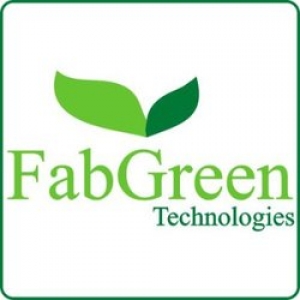
Microsoft Dynamics AX 2012 Technical Training Course FabGreen is one of the best training institutes in Bangalore. We are providing end to end training in Microsoft Dynamics AX 2012 Technical and Functional. This training will sharpen the Microsoft Dynamics AX 2012 Development; FabGreen has excellent trainers with real time experience who will expertise you in AX 2012 R3. The knowledge you gained through this training program will help you to achieve / resolve your job and business requirement. Course Features: ⢠Microsoft certification guidance ⢠Sample Live Projects are provided ⢠Lab Facility 14/7 ⢠Interview guidance - Questions and Sample Resumes ⢠Technical guidance and support after the course completion ⢠Course Materials Provide ⢠Project Architecture Designing help and Real Time Diagrams are provided ⢠Flexible training - Individual and Batch FabGreen Technologies #6/05, VP road, 2nd cross, Old Madivala, Bangalore - 560068 Phone: 8971120505/8971120606 Land Marks: 1. Opposite to Total Mall Land Marks: 2. Behind Anjaneya Temple Email: info@fabgreentech.com Web: MicrosoftDynamicsTraining.in Company Website: Fabgreentechnologies.com Course Contents: 1. Introduction to Microsoft Dynamics AX Product 2. Features of Dynamics AX 3. Architecture of Microsoft Dynamics AX a) Client â Server Architecture b) Database Architecture c) Layered Architecture 4. Introduction to Content Pane 5. Introduction to AOT 6. Project Creation steps a) Private b) Shared 7. Necessity of Project Creation 8. Working with AOT Objects 9. Table Creation a) Types of Tables in AX I. Regular II. Temp Table III. In Memory 10. Introduction to various types of Forms a) Entity type b) Source Documents c) Journal d) Sample List & Detail e) Table of Contents f) Inquiry g) Dialog h) Drop Dialog 11. Form Templates in AX 2012 a) Details Form Master b) Details Form Transactions c) Dialog d) Drop Dialog e) List Page f) Sample List g) Sample List details h) Table of Contents 12. Form Designing Controls: a) Gird b) Grid Control Properties c) Tab &Tab Pages d) Field Groups in the Form e) Form Caption f) Title Fields in the Form g) Form Maximize and Minimize h) Labels i) Help Texts in the Form j) Action Pane I. Action pane Tab II. Button Group in the Action pane Tab 13. Button Controls a) Button b) Menu Item Button c) Drop Dialog Button d) Menu Button e) Command Button (New, Delete, Save, Refresh, etc..) 14. Introduction to Enums creation ( Check box, Combo Box, Radio Button) 15. Creating Relations in the Table a) Introduction to Lookups b) Parent & Child Form designing through Relation Concept c) Header & Line concept ( Form Datasource à JoinSource Property) 16. Creating Index on Table 17. X++ Language Overview 1. Introduction to Variables creation 2. Print Statements in X++ Print command 1. Info , error , warning 2. Box Class 3. Controls statements 1. If and If else 2. For loop 3. While loop 4. Switch case 18. Accessing Data base a) X++ Select statement & SQL Select statement b) While Select c) Accessing Enum values ( Check box/Combo box) in Coding d) Using Index keyword in Coding e) Order by Clause f) Aggregate Functions g) Group by Clause h) Join command i) DML Operations a) For Single Record DML Operations a. Insert b. Update c. Delete b) For Multiple Record DML Operations a) Insert_Recordset Keyword b) Update_recordset Keyword c) Delete_from keyword 19. Container Concept a) Conpeek() b) conIns() c) Condel() d) Conpoke() e) Conlen() f) Connull() 20. Date Functions in X++ a) Today b) Date2str c) Str2date d) 2dayName e) dayOfMth f) dayOfWk g) dayOfYr h) WkOfYr i) Year j) prevMth k) PrevQtr l) PrevYr m) 13.nextMth n) nextQtr o) nextYr p) endMth q) dateStartMth r) dateMthFwd 21. Difference between two date values Usage of âIntvnoâ function and âintvscaleâ baseEnum 22. Extended Data Types creation and usage a) Inheritance b) Coding level usage of EDTs c) Getting Lookup for unbounded Controls 23. Methods: Form methods 1. Form datasource methods a. init b. initValue c. validateWrite d. validateDelete e. Create f. active 2. Form datasource field methods a. Validate b. Modified c. lookup 3. Form methods a. Init b. Activate c. run 4. Form Control / design methods a. Validate b. Modifed c. tooltip 5. Table Methods a. InitValue b. modifiedFeild c. validateWrite d. validateDelete e. validateField f. delete 6. User defined methods 1.Display 2.Exist ( eliminating duplicate record insertion ) 24. Delete Actions in Table a) Cascade b) Restricted c) Cascade + Restricted 25. Introduction to MenuItems 1. Display 2. Action 3. Output 1. Display menuItem: ⢠Creating child form ⢠Linking Child form through Menu Item button on Parent Form ⢠Getting default value in Child form from Parent form by args class 2. Action MenuItem: ⢠Creating a Dialog box through Job ⢠Creating a Class ⢠Converting Class as a Action Menu Item 3. Output Menu Item: Creating a Sample Report by using following Sections Reports: 1. X++ Reports 1. Prolog 2. Page Header 3. Header 4. Section Group 5. Footer 6. Page Footer 7. Epilog 8. Programmable Section 2. SSRS Reports a) Query based Report development b) Report Data Provider base (RDP) Model 26. Query creation 27. Info parts in the Form design 28. Number Sequence Development 29. Dynamic Lookup in the Form 1. SysTableLookup Class 2. Eliminating duplicates in the dynamic lookup 3. Getting selected criteria in the lookup 30. Security Roles: 1. User creation 2. Assign a role to a User 3. Giving permissions to particular User
Phone : 8971120505
When you call, don't forget to mention that you found this ad on Bhartiads.com
Reply to this Ad |
Click here to go Back |